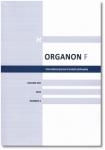Analysis of Time References in Natural Language by Means of Transparent Intensional Logic
Analysis of Time References in Natural Language by Means of Transparent Intensional Logic
Author(s): Marie Duží, Jakub MacekSubject(s): Epistemology, Logic, Philosophy of Science
Published by: SAV - Slovenská akadémia vied - Filozofický ústav SAV
Keywords: Calendar; Gregorian calendar; Julian calendar; time duration; time interval; TIL; time point; time span; Transparent Intensional Logic; typed system; year;
Summary/Abstract: In this paper, we deal with sentences containing time references like ‘five years ago’, ‘three years older’, ‘in five seconds’. It turns out that such sentences are pragmatically incomplete, because there is an elliptic reference to a calendar that makes it possible to determine the length of the time interval associated with a time duration like a year, month, day, or to compute the time interval denoted by terms like ‘February 29, 2016’. Since Transparent Intensional Logic (TIL) takes into account two modal parameters, namely possible worlds of type ω and times of type τ, and this system is particularly apt for the analysis of natural language expressions, our background theory is TIL. Within this system, we define time intervals, calendar time durations, and last but not least a method for adding and multiplying time durations in a way that takes into account the leap days and leap seconds. As sample applications, we analyse two sentences, to wit, “A year has 365 days” and “Adam is 5 years older than Bill”.
Journal: Organon F
- Issue Year: 25/2018
- Issue No: 1
- Page Range: 21-40
- Page Count: 20
- Language: English

